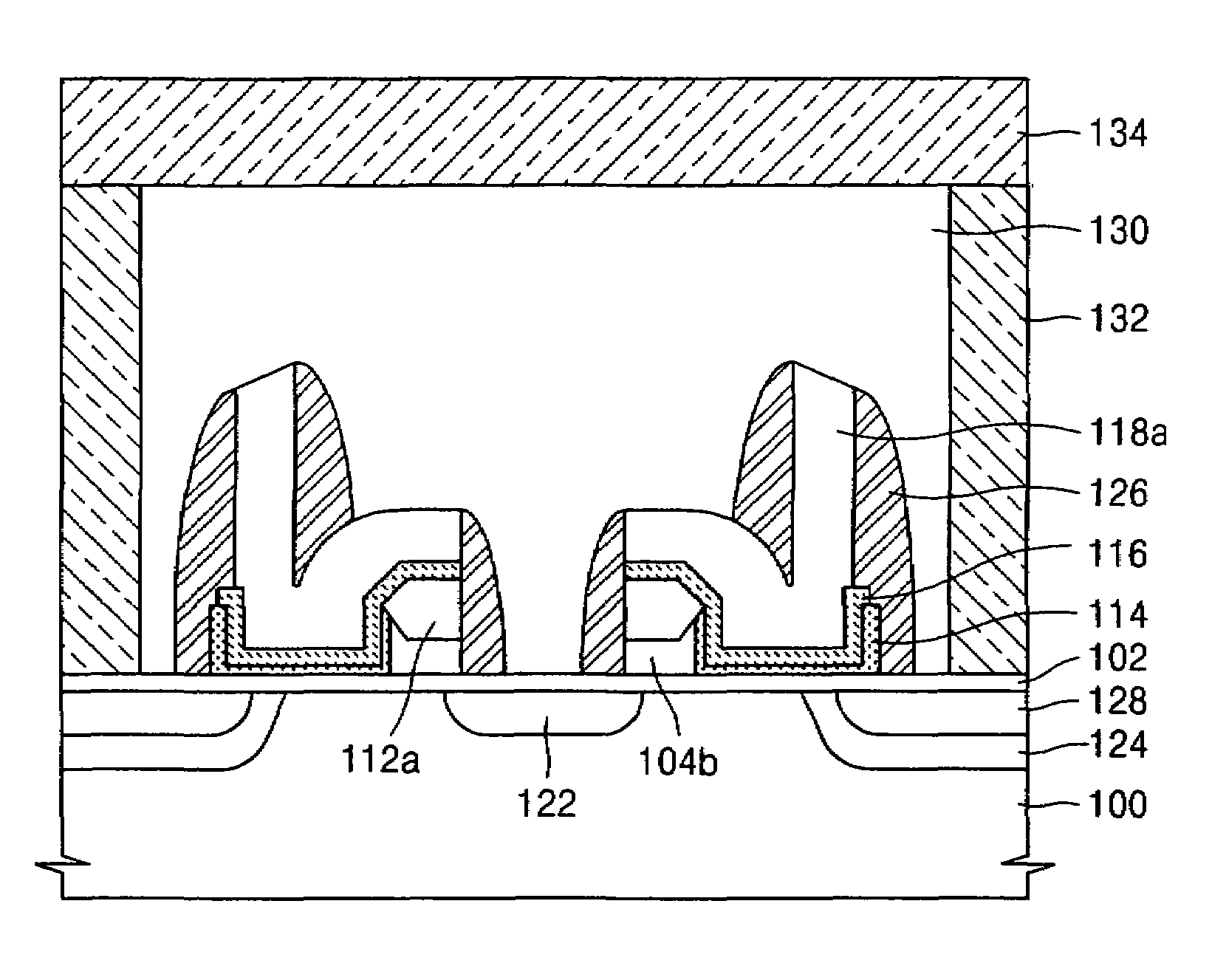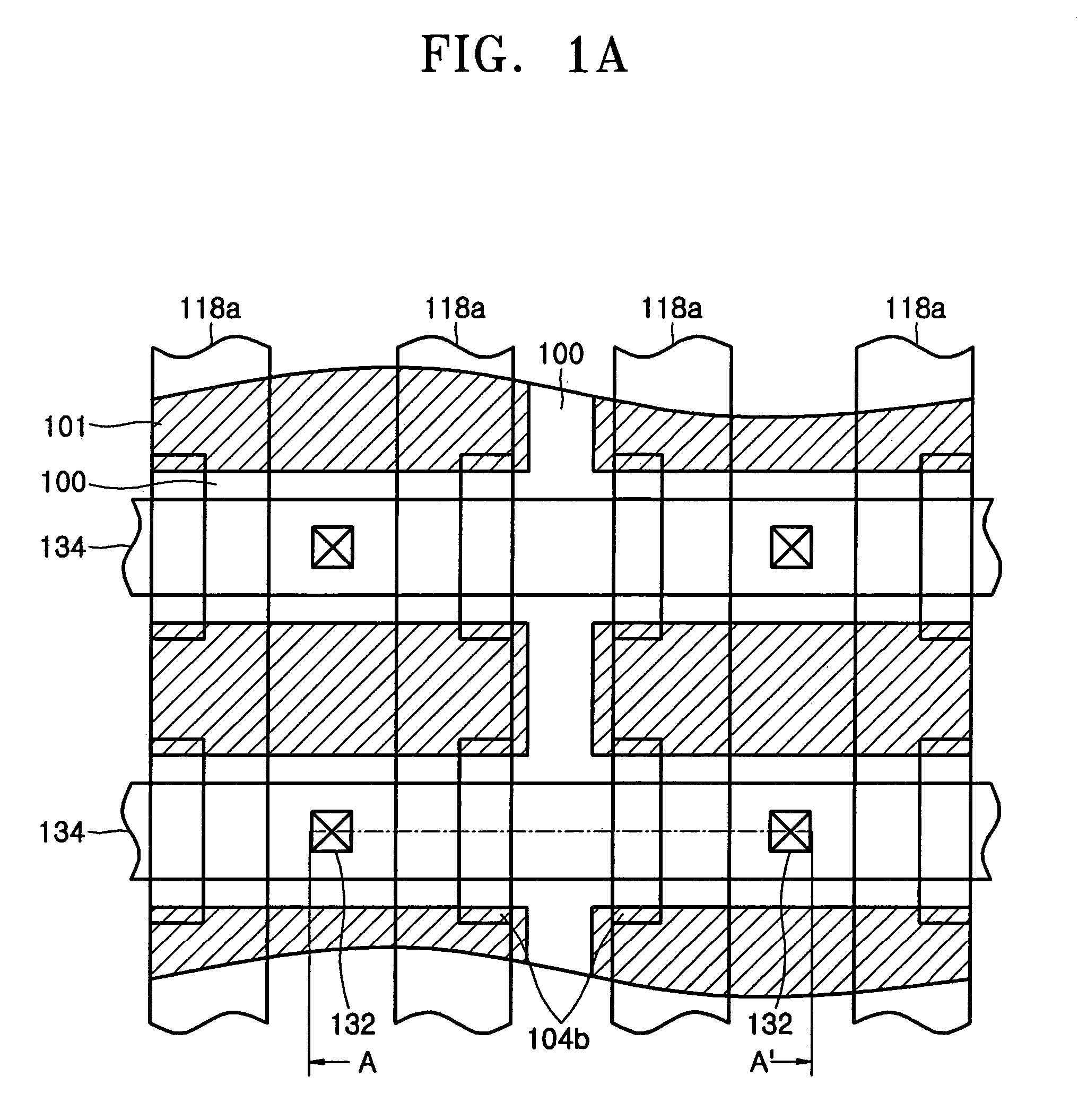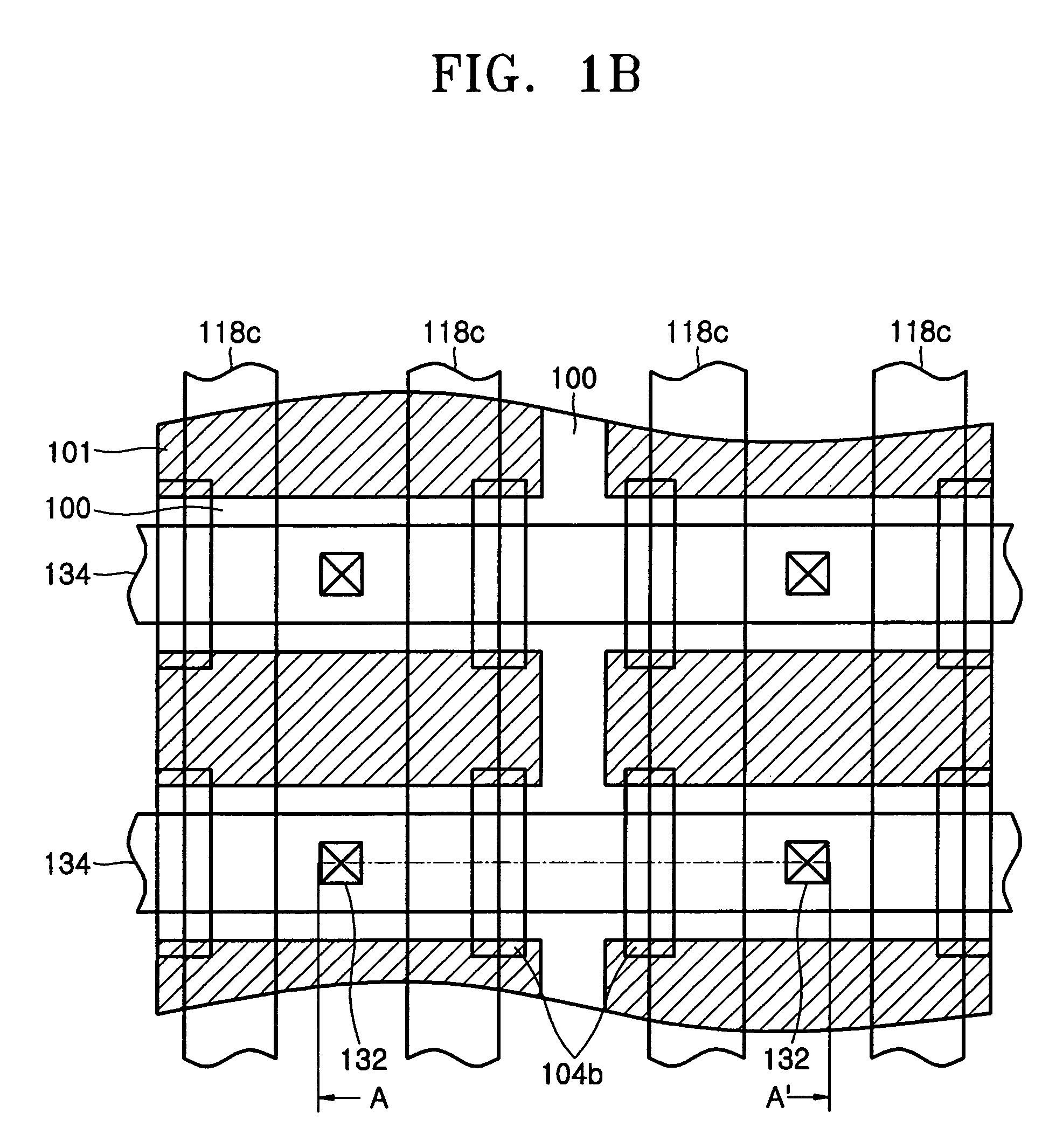Split gate type nonvolatile semiconductor memory device, and method of fabricating the same
a semiconductor memory and nonvolatile technology, applied in the direction of semiconductor devices, electrical devices, transistors, etc., can solve problems such as overlap variation
- Summary
- Abstract
- Description
- Claims
- Application Information
AI Technical Summary
Benefits of technology
Problems solved by technology
Method used
Image
Examples
Embodiment Construction
[0030]FIGS. 1A and 1B are schematic layouts illustrating main structural elements of a split gate type nonvolatile semiconductor memory device according to embodiments of the present invention. FIG. 12 is a sectional view illustrating the split gate type nonvolatile semiconductor memory device taken along line A–A′ of FIG. 1A, and FIG. 20 is a sectional view illustrating the split gate type nonvolatile semiconductor memory device taken along line A–A′ of FIG. 1B. A first embodiment of the invention shown in FIGS. 1A and 2 through 12 is different from the second embodiment of the present invention shown in FIGS. 1B and 13 through 20 in that, in the first embodiment of FIGS. 1A and 2 through 12, the floating gate 104b is completely or almost completely overlapped by the control gate 118a, and, in the second embodiment of FIGS. 1B and 13 through 20, the floating gate 104b is only partially overlapped by the control gate 118c.
[0031]Referring to FIGS. 1A, 1B 12 and 20, a device isolatio...
PUM
 Login to View More
Login to View More Abstract
Description
Claims
Application Information
 Login to View More
Login to View More - R&D
- Intellectual Property
- Life Sciences
- Materials
- Tech Scout
- Unparalleled Data Quality
- Higher Quality Content
- 60% Fewer Hallucinations
Browse by: Latest US Patents, China's latest patents, Technical Efficacy Thesaurus, Application Domain, Technology Topic, Popular Technical Reports.
© 2025 PatSnap. All rights reserved.Legal|Privacy policy|Modern Slavery Act Transparency Statement|Sitemap|About US| Contact US: help@patsnap.com



